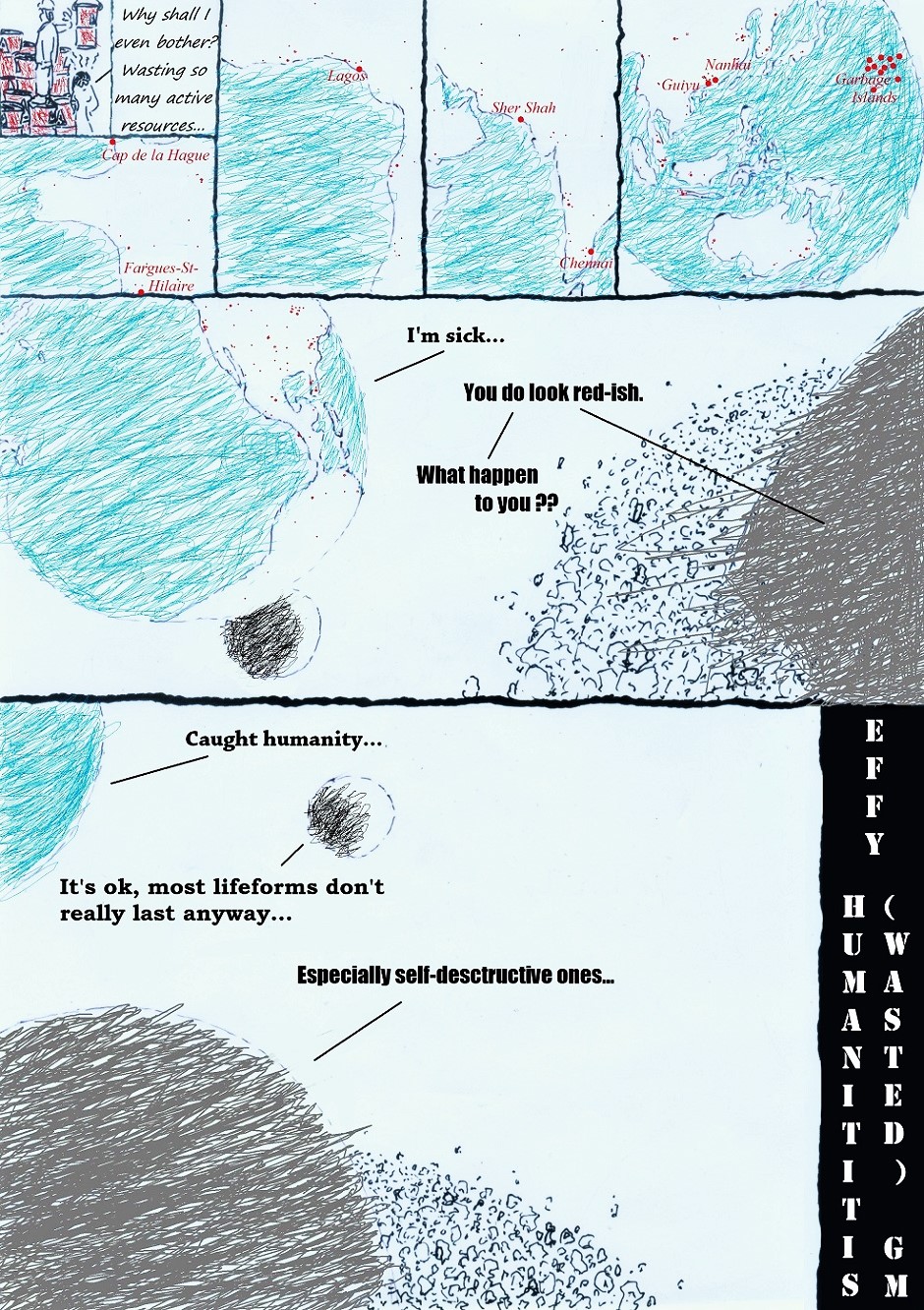Effy’s pissed.
Efficiency is defined by the amount of outputs a process is able to generate, out of all the resources it uses. The easiest example would be financial efficiency, as all inflows and outflows can be measured with a common unit: money. That’d make: financial efficiency = amount of money generated (flowing out) / amount of money invested (flowing in). Quite straightforward, anything over 100% would be efficient, and anything below would be inefficient, with the gap being… wasted.
Applied in general fields, wastes result from inefficiencies, though not necessarily financial ones. For example. a sale staff from a Shanghai luxury shop might be wasting his time during coronavirus as time will never be gained back (and by exposing himself, the lifespan of the person might even reduce overall). However by selling two bags in one day, the process itself might still be financially efficient for the shop owner as the price will be enough to cover the good, the sale staff salary for the day, the rent, utilities, etc..
Unfortunately, not all wastes generated from financially efficient processes are as benign as the cashier’s waste of time. On the contrary, some wastes have very high toxicity, making it easier now to understand why Earth looks a bit feverish.
Since financial efficiency seems to be the main scale used to assess a process overall efficiency, a better grasp of wastes toxicity in the model is becoming urgent. One way would be to increase the negative value of these toxic outputs, another would be to consider the curing cost as monetary inflows (for example imposing the provision for waste treatment and asset closure in financial accounts).
Constructive comments welcome.
G.M.
PS: A few famous spots to treat mentioned in the comics below. Unfortunately, the list seems endless and affect all continents. A map can be found here if you want to check your specific location: https://ejatlas.org/. I strongly invite you to learn about them using your favorite browser, images tell the story:
- La Hague / France: French nuclear waste processing plant. Good side. they’re recycling. Bad side, well nuclear waste…
- Guiyu / China & Lagos / Nigeria: Some of the world’s biggest e-waste dumpsites. US, Europe, Asia and Africa all dumps used computers and smartphones in open air sites, for young (if not underage) Chinese or Nigerian to sort them out. Ecological disasters, local population live within a toxic environment with heavily polluted water and poisoned air system.
- Sher Shah (Karachi) / Pakistan & Chennai / India: Home of major scrap markets in south Asia.
- Nanliu / China: Industrial wastes always end up into water. China being world’s factory, it’s water system is now greatly damaged. Nanliu river is one example, with very high heavy metal readings.
- Garbage Islands / Pacific Ocean: It’s a vortex in the north pacific ocean that gather plastic and other litter dumped in the water. These debris follow rivers, flow into seas, and float all the way to rest aimlessly there. some batch are so large and dense that they could be taken as little islands. The place already inspired countless artist, such as Gojira with their song Toxic Garbage Island.


[…] From an Effy point of view, time spent in traffic jams (valued around the billion cny per day), standing in sweaty subways or pedaling through town does not produce much value. Commuting time negatively impacts workers life (OECD also include commuting time when assessing well-being); does little for the society as a whole; and can be roughly assumed as wasted! […]
[…] related, as chaos feeds efficiency. We defined efficiency previously Continuing Education and Humanitis (comments section), but the main take away is that efficiency generates more than the sum of resources it […]
[…] material & human) in the process. All this can quickly weight against financial efficiency (you can refer to for the efficiency formula from Humanitis episode), making the whole venture leaping into the future (maybe), but at loss (most of times). Bubble, […]
[…] Every output can be simplified into a unit of output. This overlooks harmful outputs of a process, that indicators generally exclude or minimize. This is sometimes on purpose, sometimes not (refer to Humanitis). […]
[…] only focus on one aspect of efficiency, and use a limited amount of factors. As seen before in “Humanitis” episode, efficiency often contradicts itself. For example, a factory spilling oil waste and polluting a […]
[…] A few exceptions challenging the common understanding of efficiency can be seen. However, these are exceptions that prove the rule, and they seldom make a frontal rhetorical attack on the core precept that “more efficiency is better”. Slow food (article from Slow Food) or slow fashion (article from Sloww) for example challenge the need for speed and cost efficiency, but not for efficiency overall, they only question the factors we use to assess efficiency (a topic covered in Meeting Effy & Humanitis). […]